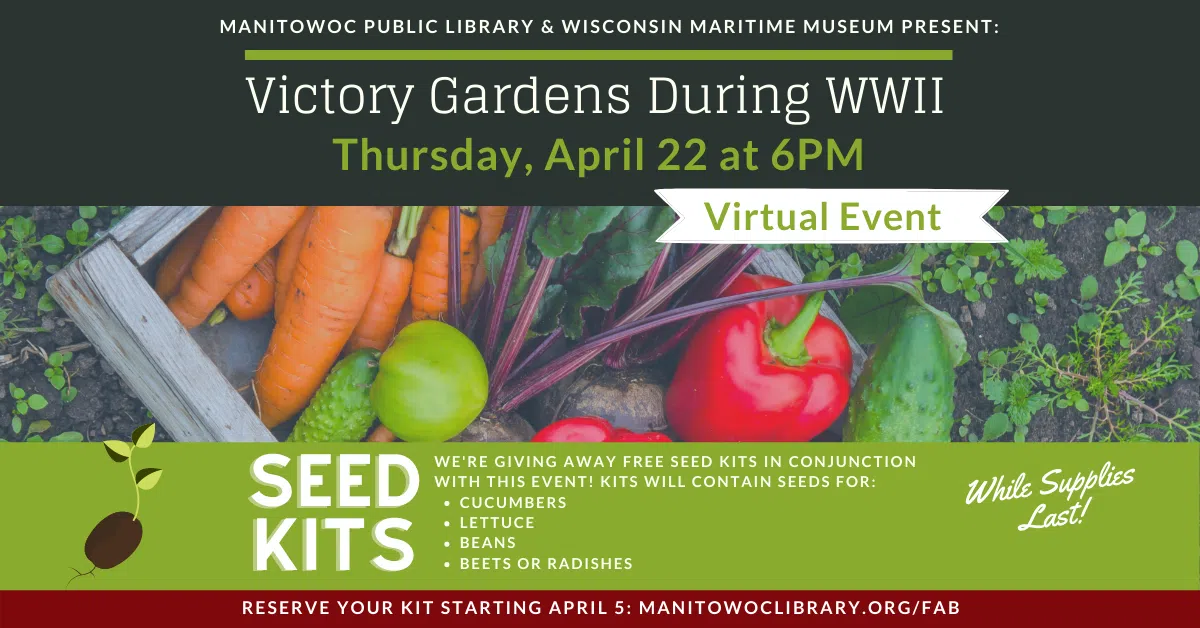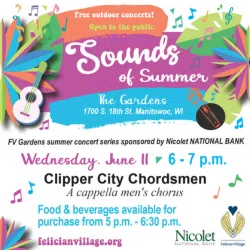The following is an article submitted by Shane Lee, the Youth Engagement Coordinator at Manitowoc’s Wisconsin Maritime Museum.
Spring has sprung, promising warmer temperatures and the return of life. My favorite lifeforms are those that feed me. Gardening season is finally here and visions of homegrown produce dance in my head. Yes, I dream about food. Last night, I dreamt
about a school cafeteria tray of mashed potatoes, roast beef, gravy, and steamed broccoli that kept refilling itself no matter how much I ate. Bliss!
In the real world, I find my bliss growing out of the ground. I’ve loved gardening since my grandparents let me eat my first home grown carrot. They didn’t even make me wash it. I don’t know what I enjoyed more—the carrot or eating something with dirt on it. Either way, I was hooked. I still get to snitch whatever veggies I want from Grandma’s garden. I like garden-fresh cucumbers the best.
Shane Lee, Youth Engagement Coordinator, Wisconsin Maritime Museum
Finding the tasty treats are the ultimate treasure hunt. I squat down in the dirt, bobbing and weaving, peering through the twisting vines and leafy hindrances. Then, presto! The produce of pickle perfection! My grandfather has passed on, but he is very present in my own garden. I inherited his tiller. Grandpa trudges right along with me as I churn up the earth. We have a cursing contest when the tiller inevitably quits. Then we share a smile and a laugh when the tiller makes a comeback and finishes the job.
It won’t be long until I call on Grandpa’s tiller again. My wife Julia and I started receiving our seed order and sketched out which seeds will go where. Thankfully, we had a lot more luck obtaining seeds this year than we did in 2020. Like many people, we failed to foresee the 2020 “seed boom” as people prepared for whatever the coronavirus pandemic might bring. Thousands of first-time gardeners broke soil and started referring to their proud produce patches as “victory gardens,” a nod to the original gardens of the same name grown during the two World Wars.
If you’re hungry for further victory garden knowledge, you’re in luck: Manitowoc Public Library and Wisconsin Maritime Museum are teaming up to offer a Victory Garden Virtual Presentation, cleverly titled “Victory Gardens During WWII.” This virtual program will Premiere on MPL’s Facebook page (www.facebook.com/manitowoclibrary) at 6 PM on Thursday, April 22.
During both World Wars, United States civilians made sacrifices in the forms of investment, production, and conservation. Farmers focused on producing food for the soldiers. During World War II, 60% of Lakeside Packing’s food production went to the war effort. One half of the peas grown in Wisconsin fed our service men. The large task of feeding the soldiers left a large food gap to be filled back home. The government launched the “Food Will Win the War!” campaign, publishing propaganda to push Americans to grow their own fruits and vegetables in their backyards. And the propaganda worked! The 20 million victory gardens planted in 1943 accounted for nearly 40% of all the vegetables eaten in the U.S. that year.
For those seeking their own taste of victory, Manitowoc Public Library are offering patrons a Victory Garden Grab Bag. It contains an informational booklets, seed packets (cucumbers, lettuce, beans, and either beets or radishes), and one sheet of newspaper to convert into a plant pot. The Victory Garden Virtual Presentation will teach attendees more about the great civilian sacrifices, the propaganda, present day connections, and tips on creating your own victory garden, including a tutorial on making newspaper plant pots for starting plants indoors. The presentation will not include the list of words my grandfather and I used for the tiller. I hope to see you at the presentation, because if you’re like me, food always wins.






